Abstract
OBJECTIVE. This study evaluates the relationship between hospital and regional characteristics and the prevalence of mobile computed tomography in rural hospitals. DATA SOURCES AND STUDY SETTING. Primary data were gathered from all rural hospitals in eight northwestern states (n = 471) in 1991. Secondary data sources include the AHA Annual Survey, the Area Resource File, and HCFA's PPS data sets for 1987-1990. STUDY DESIGN. Primary data are a single observation taken in the summer of 1991. Key hospital characteristics include patient volume, distance to the nearest referral center, distance to the nearest hospital, financial performance, and medical staff size. Key regional variables include beds per unit area, hospitals per unit area, and physician supply. DATA COLLECTION. A structured telephone interview was conducted with the hospital administrator at each hospital. For many hospitals, detailed information was gathered with additional calls to hospital personnel. PRINCIPAL FINDINGS. Where hospitals are closely spaced, mobile CT suppliers are more readily available, and hospitals are more likely to choose mobile CT than in areas where hospitals are farther apart. Hospitals may realize economies of scale and scope in their decisions about CT adoption. CONCLUSIONS. Transportation costs are an important determinant of hospital decisions about acquiring CT, but may be less important for higher-priced medical technologies. There is no support for the proposition that rural hospitals compete with referral centers for patients by purchasing technological equipment.
Full text
PDF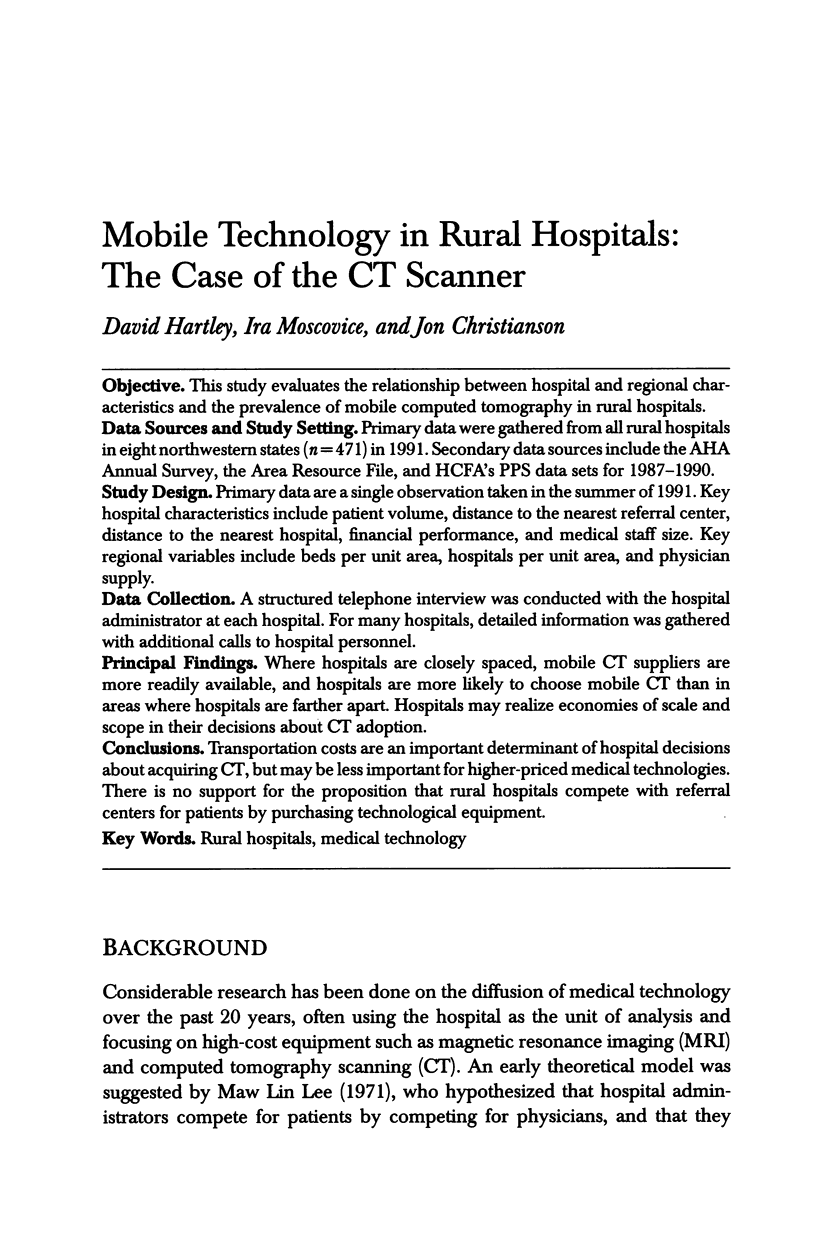
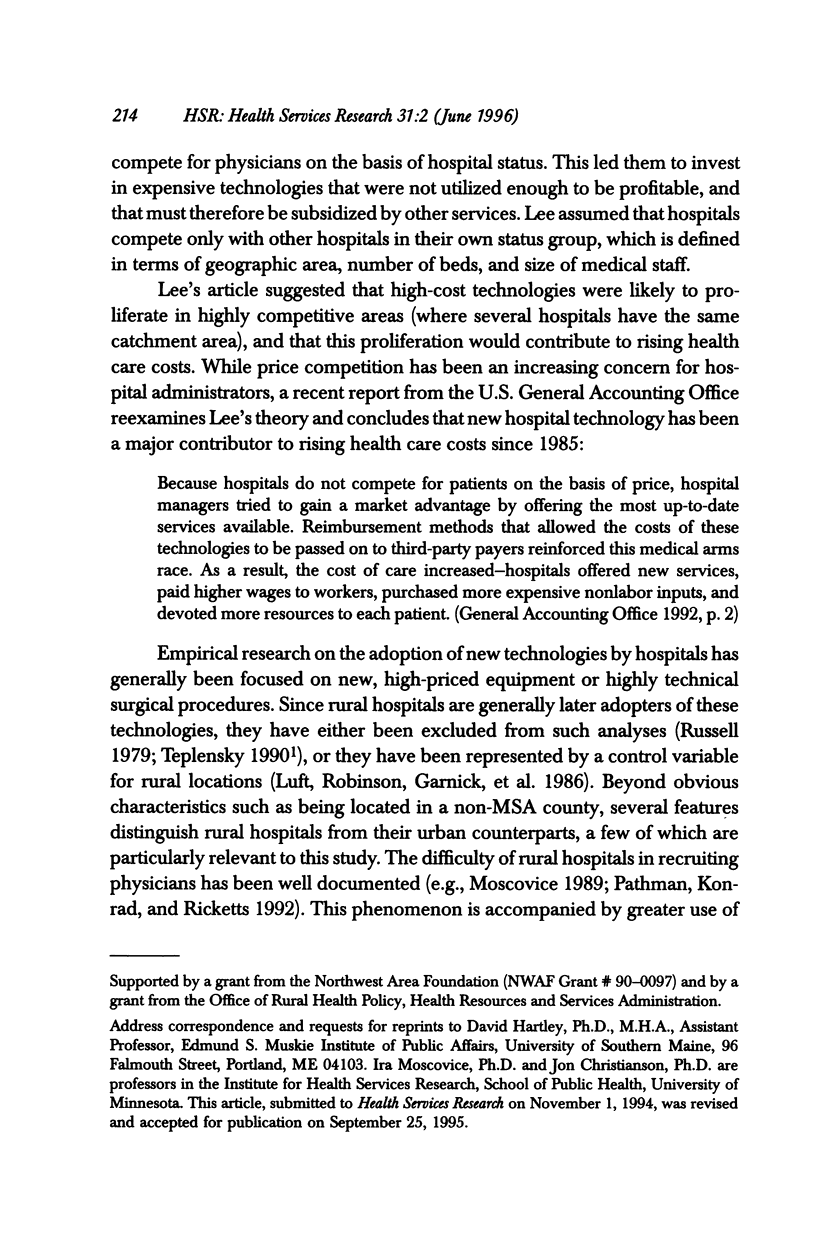
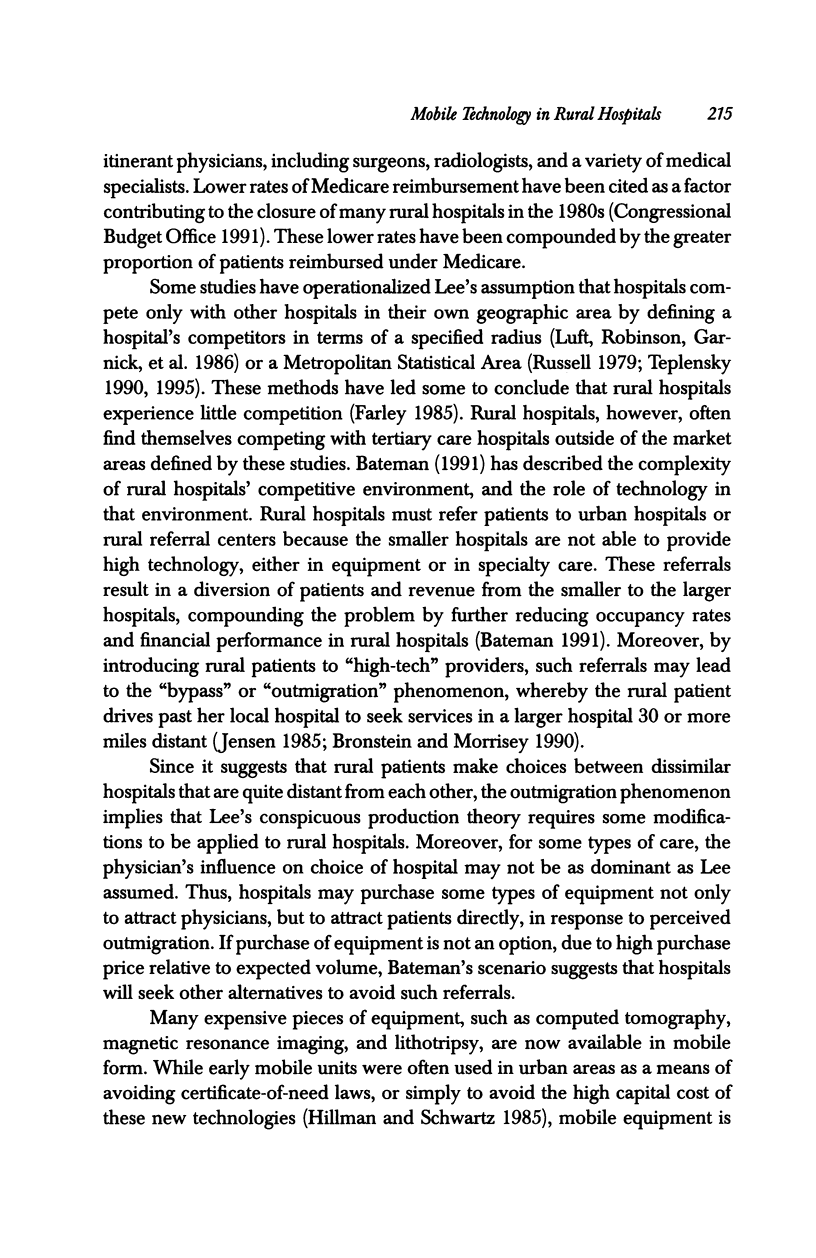
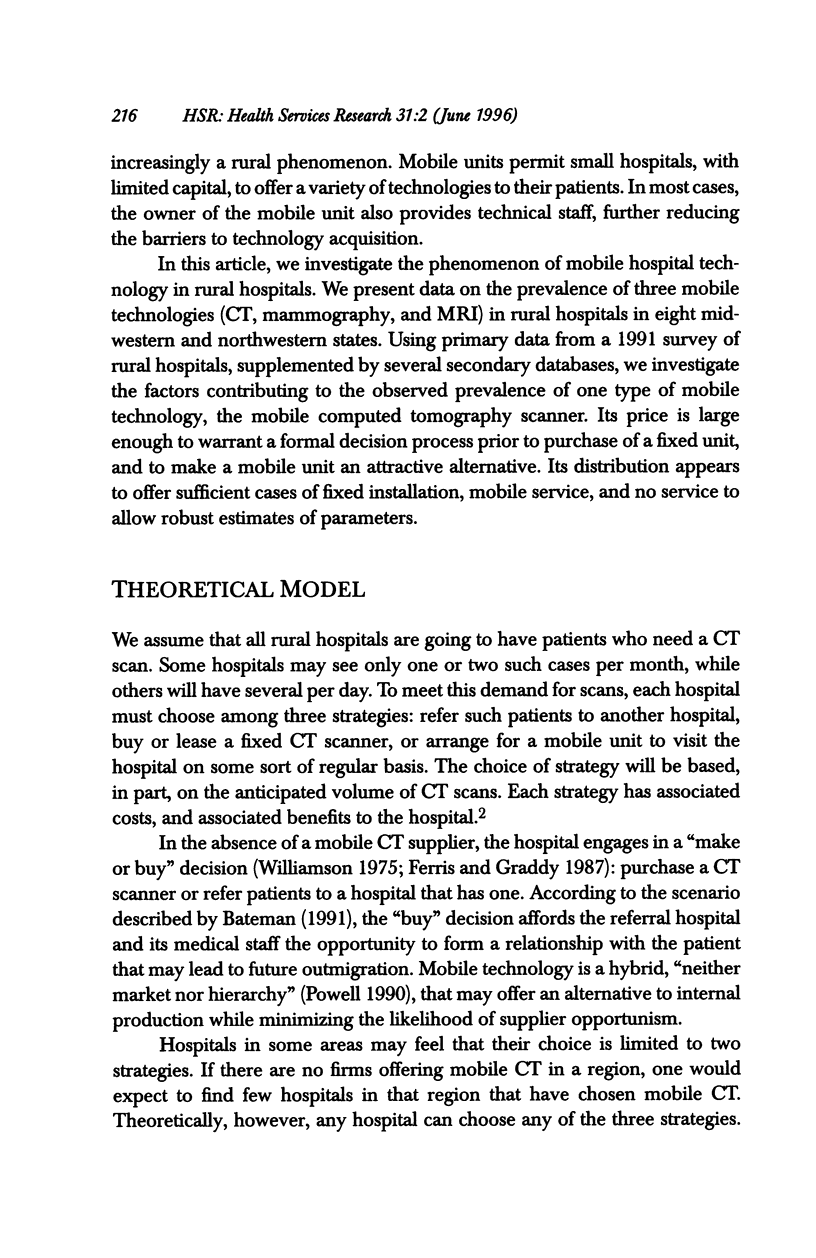
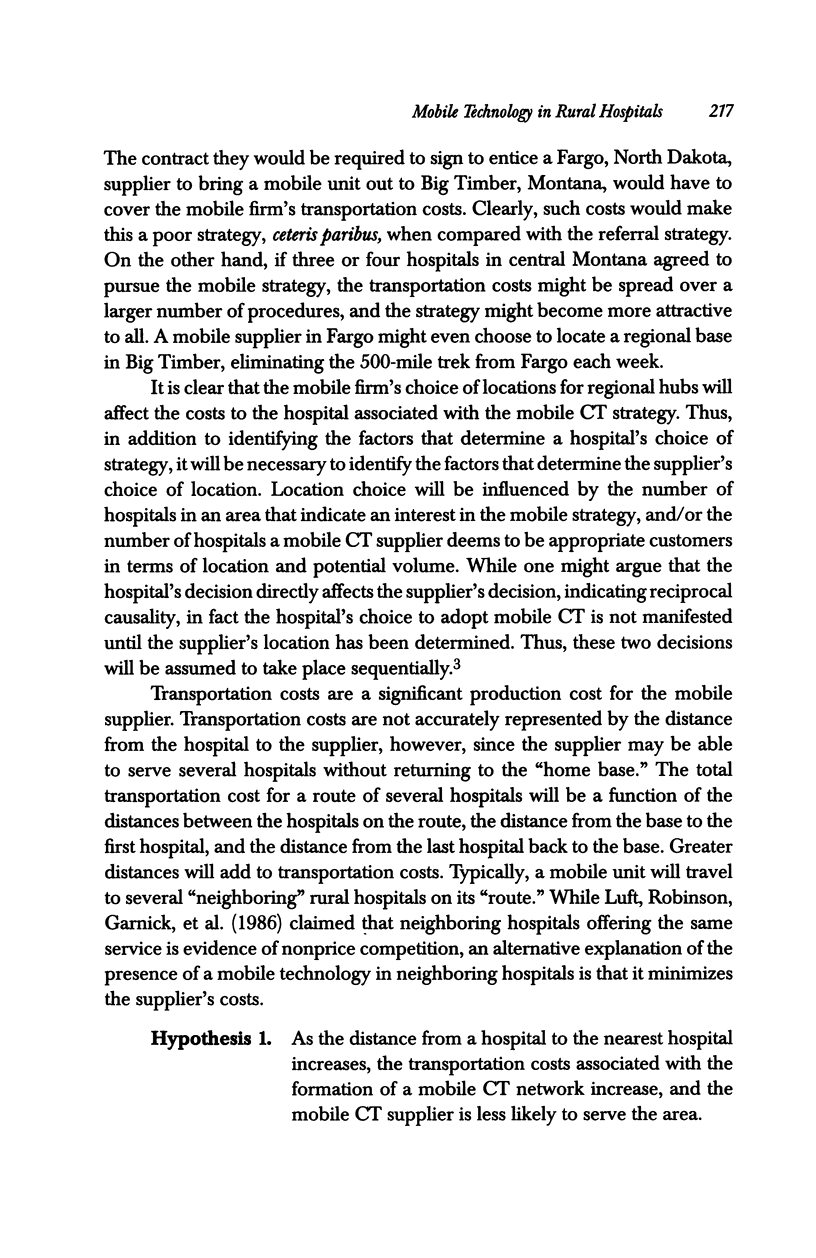
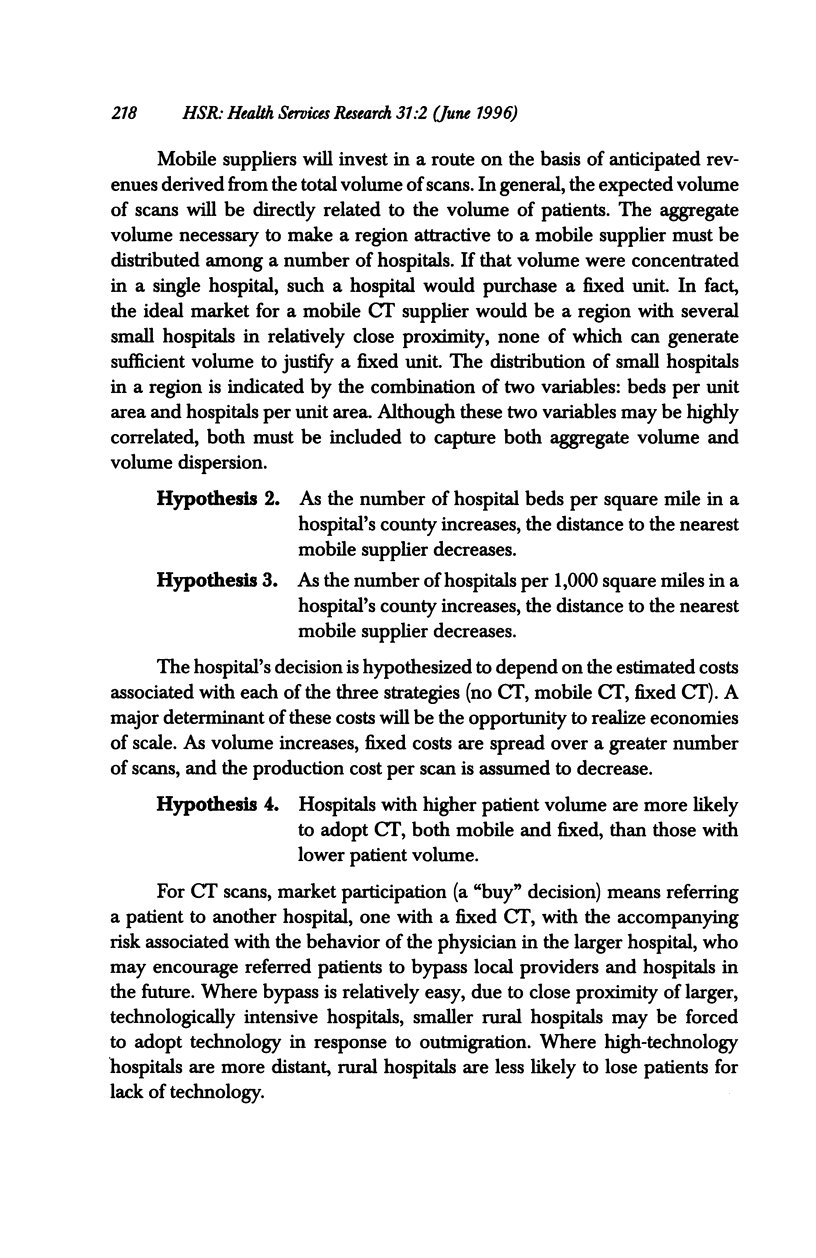
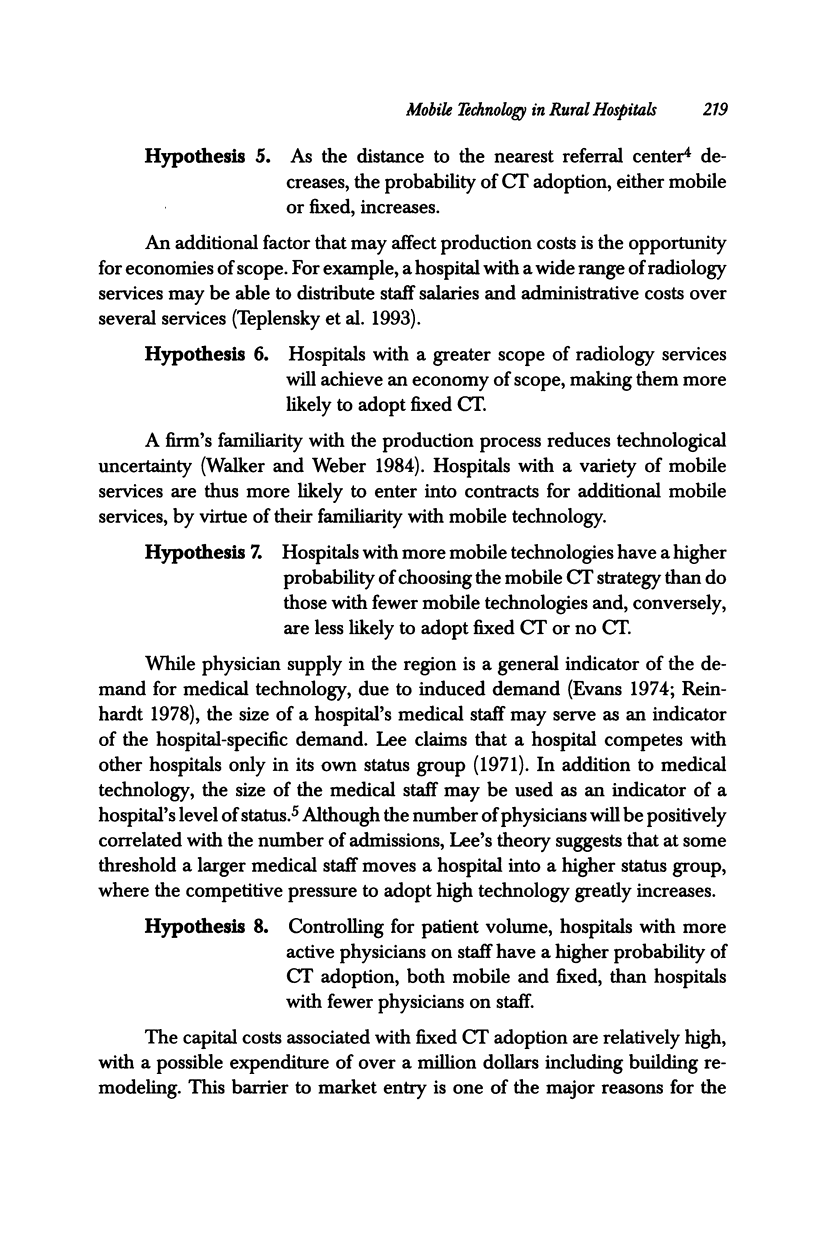
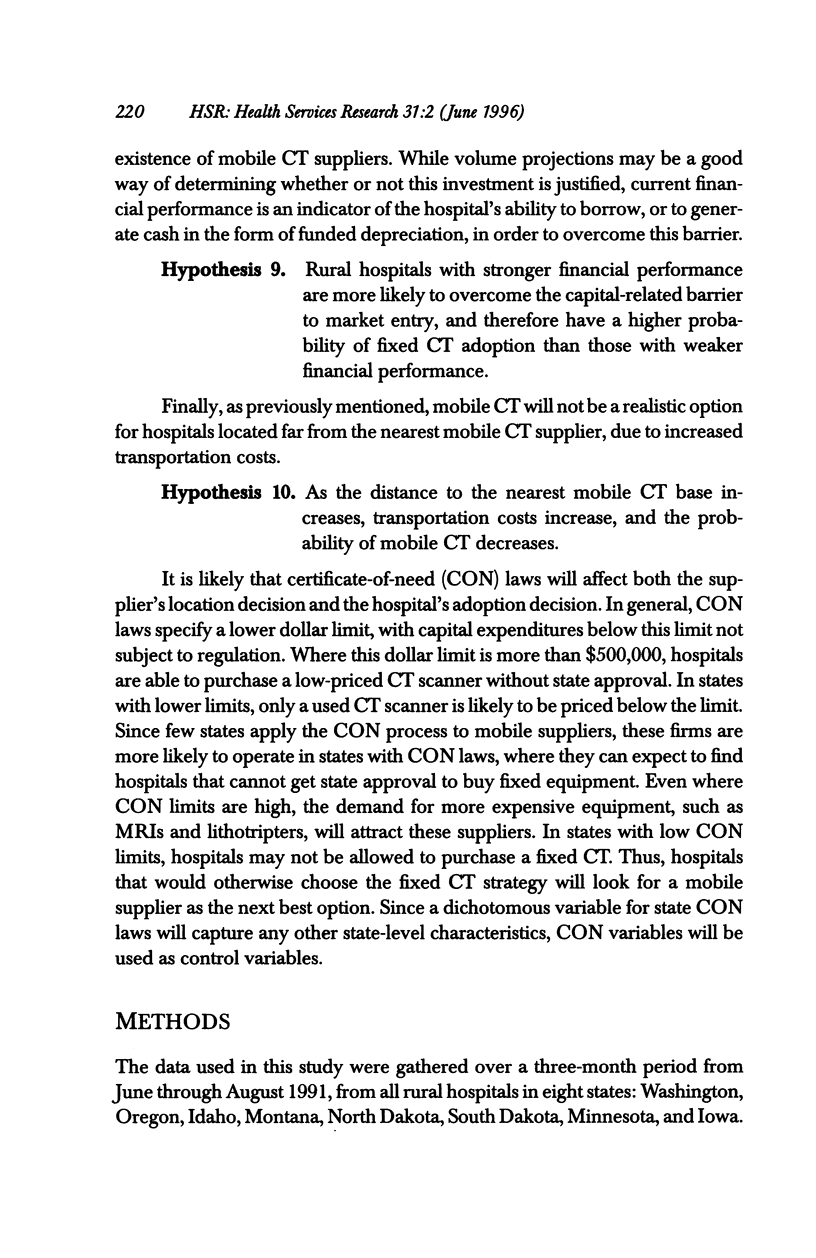
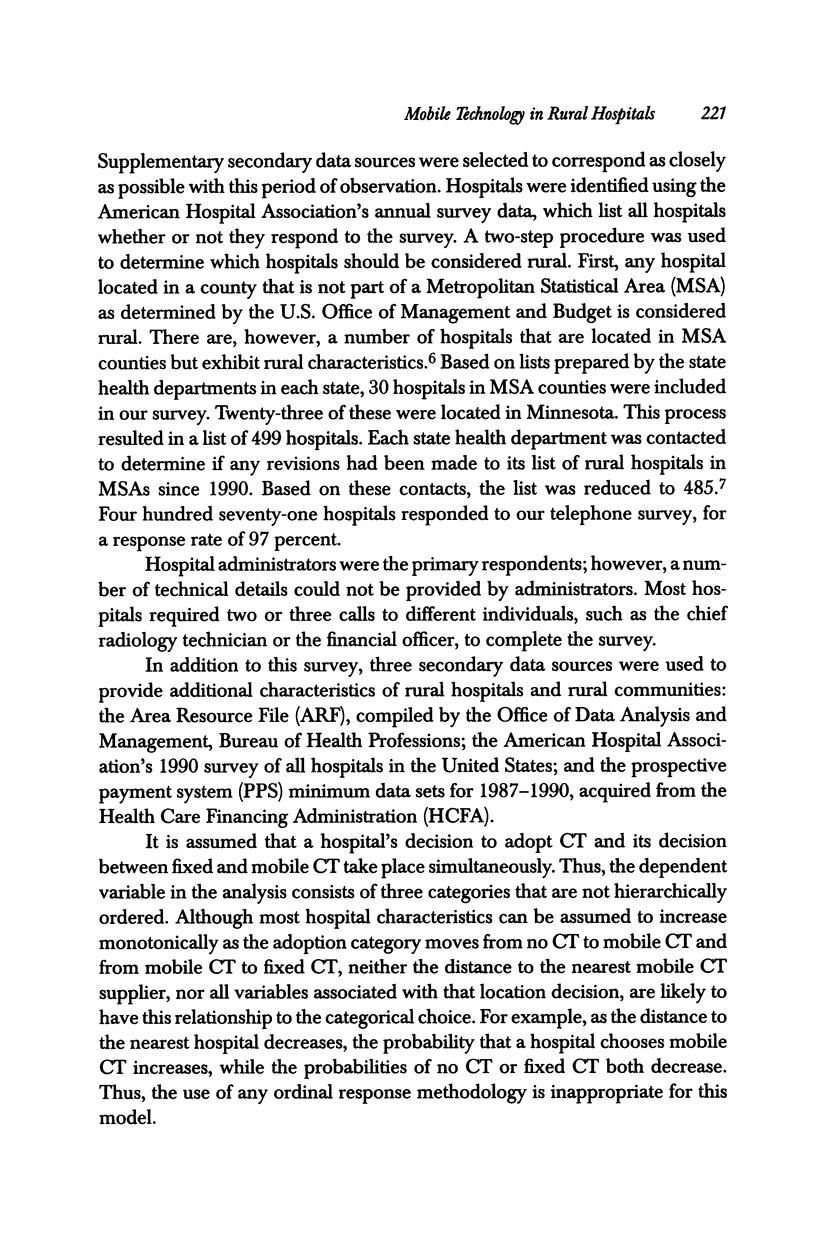
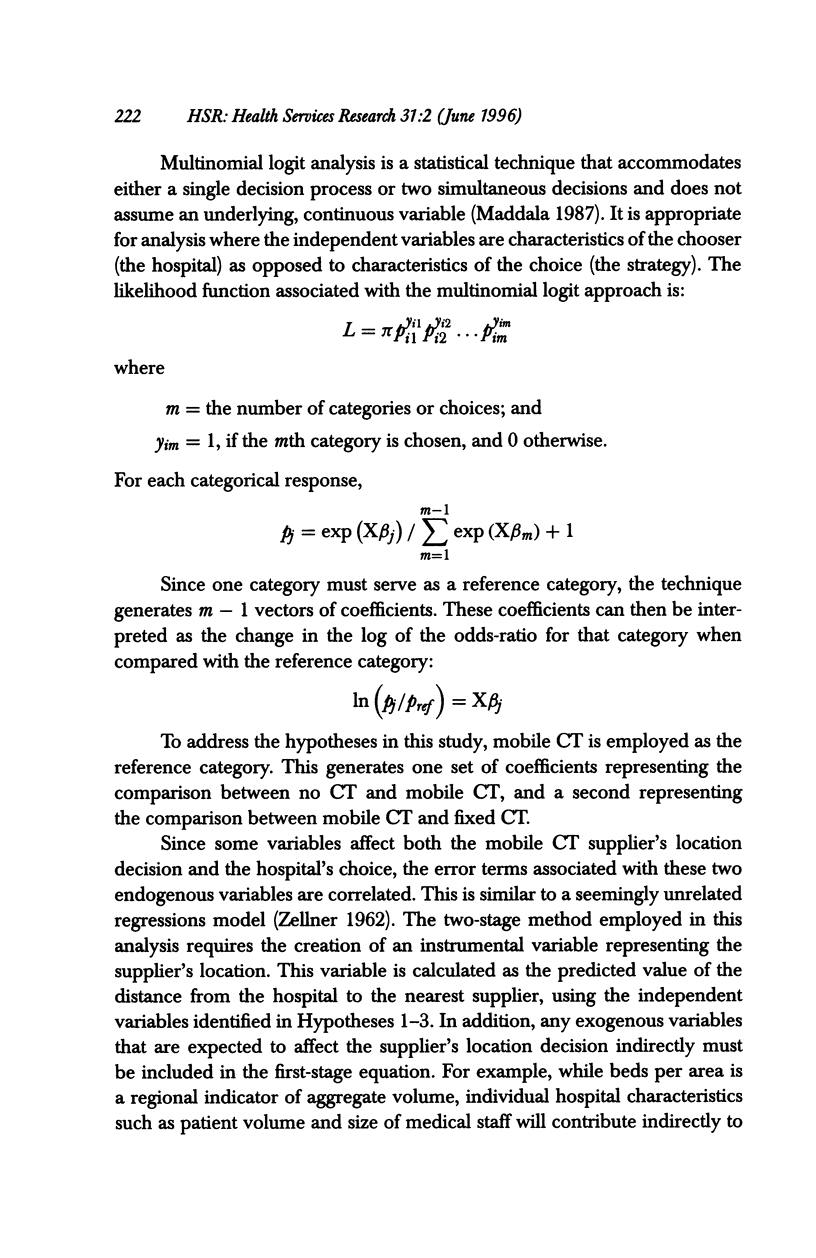
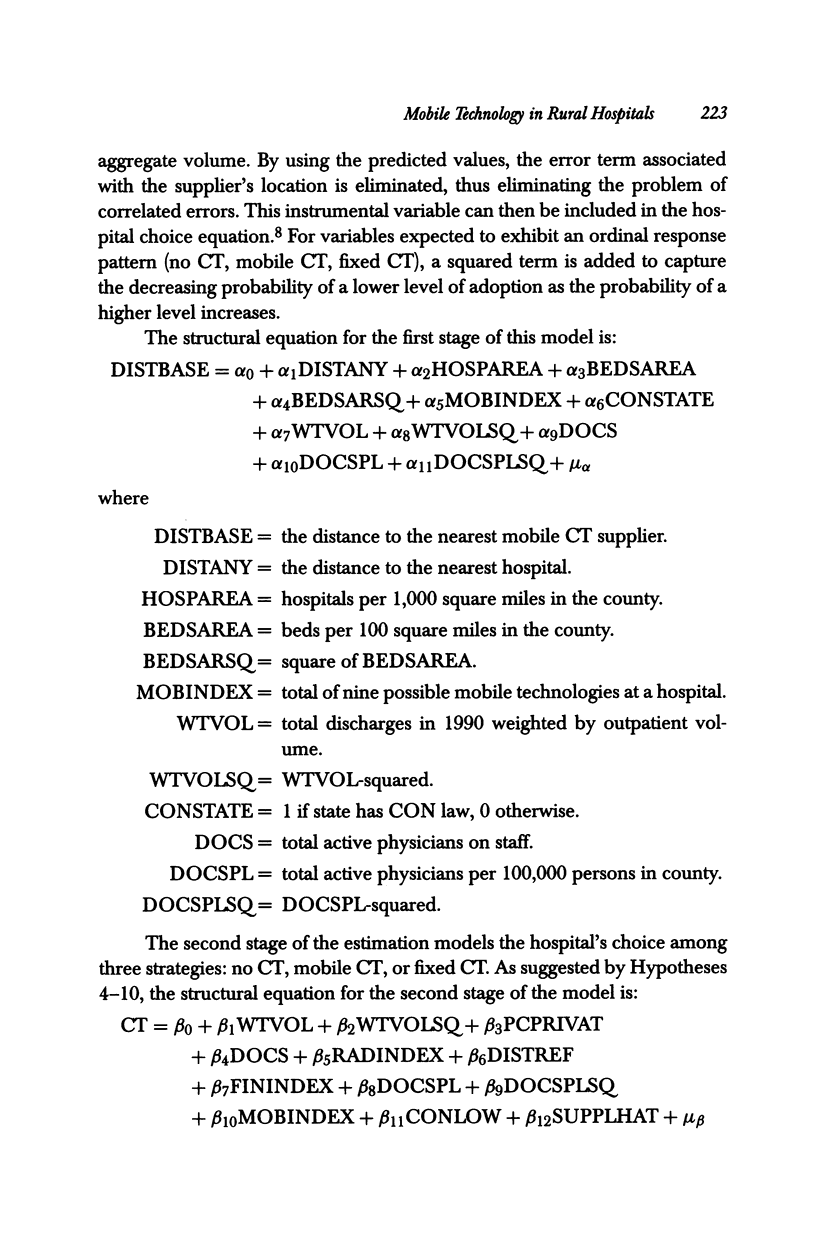
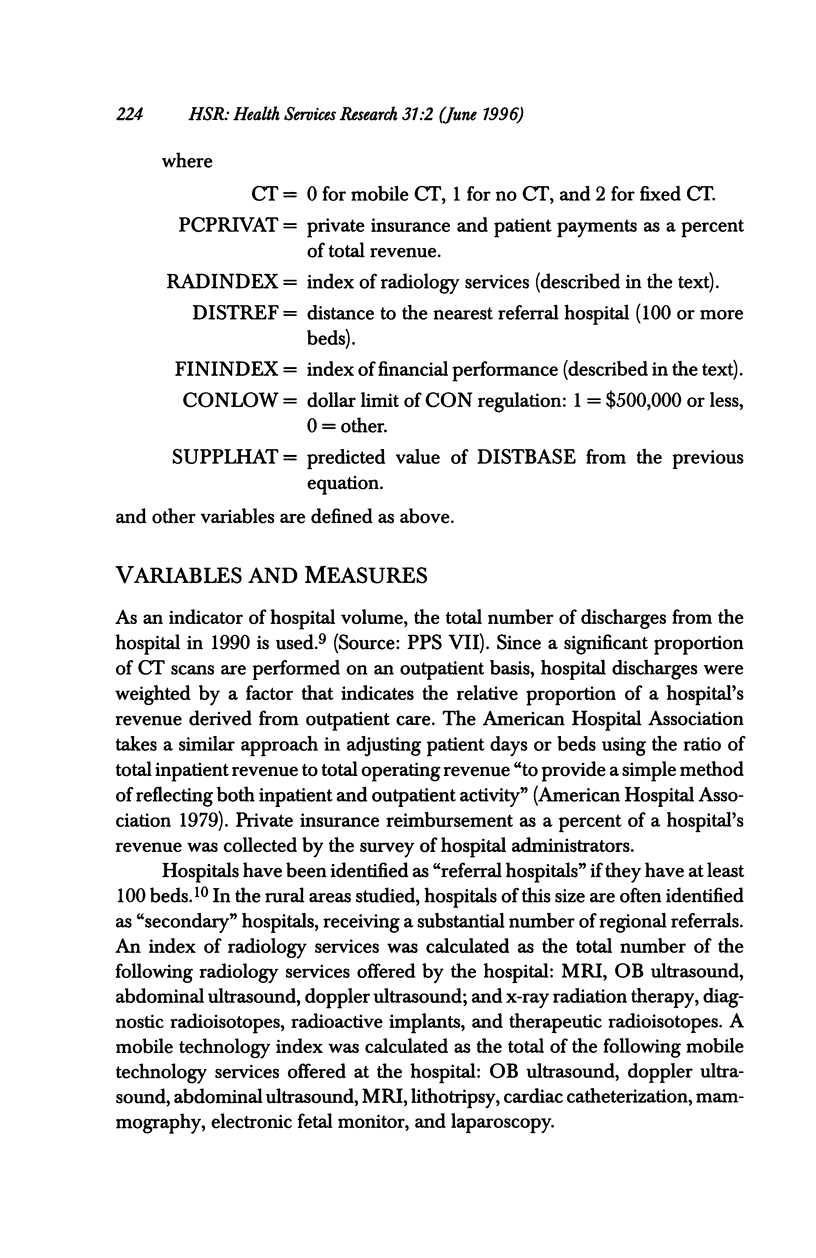
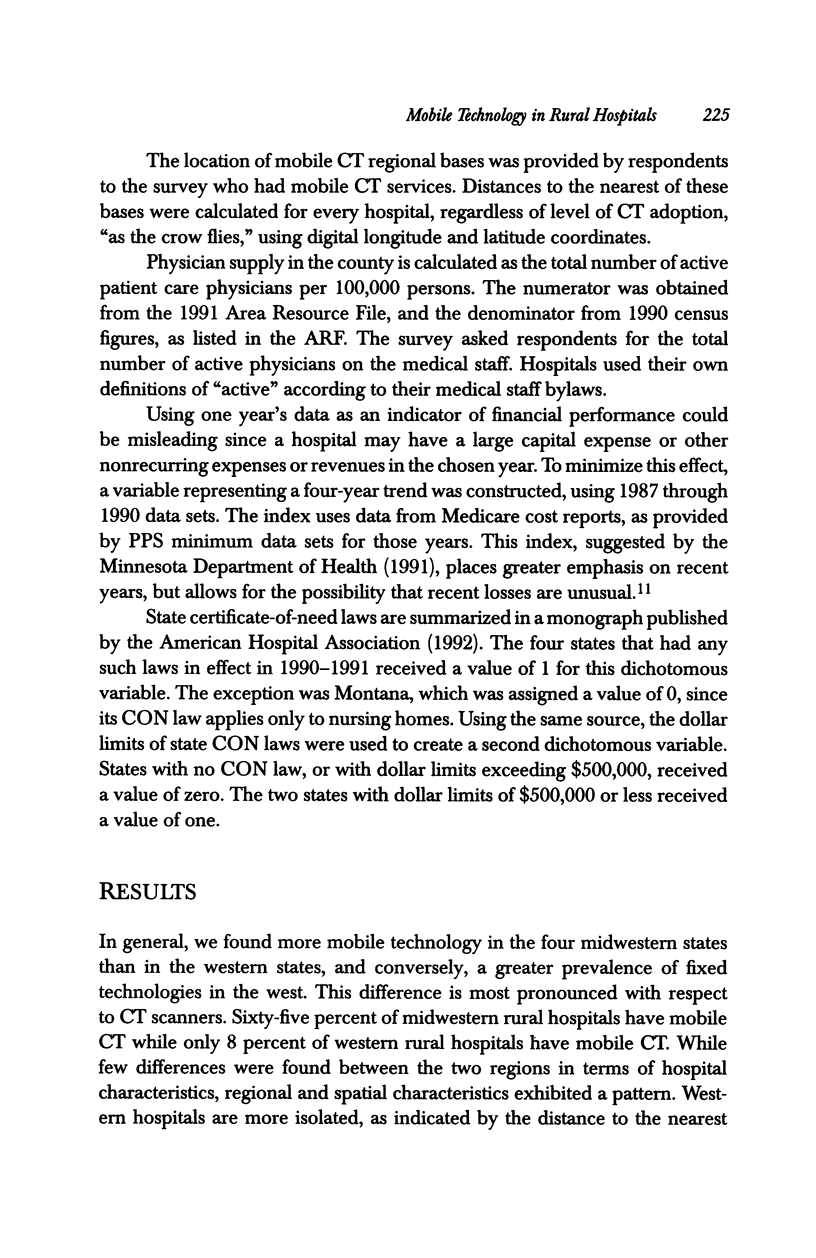
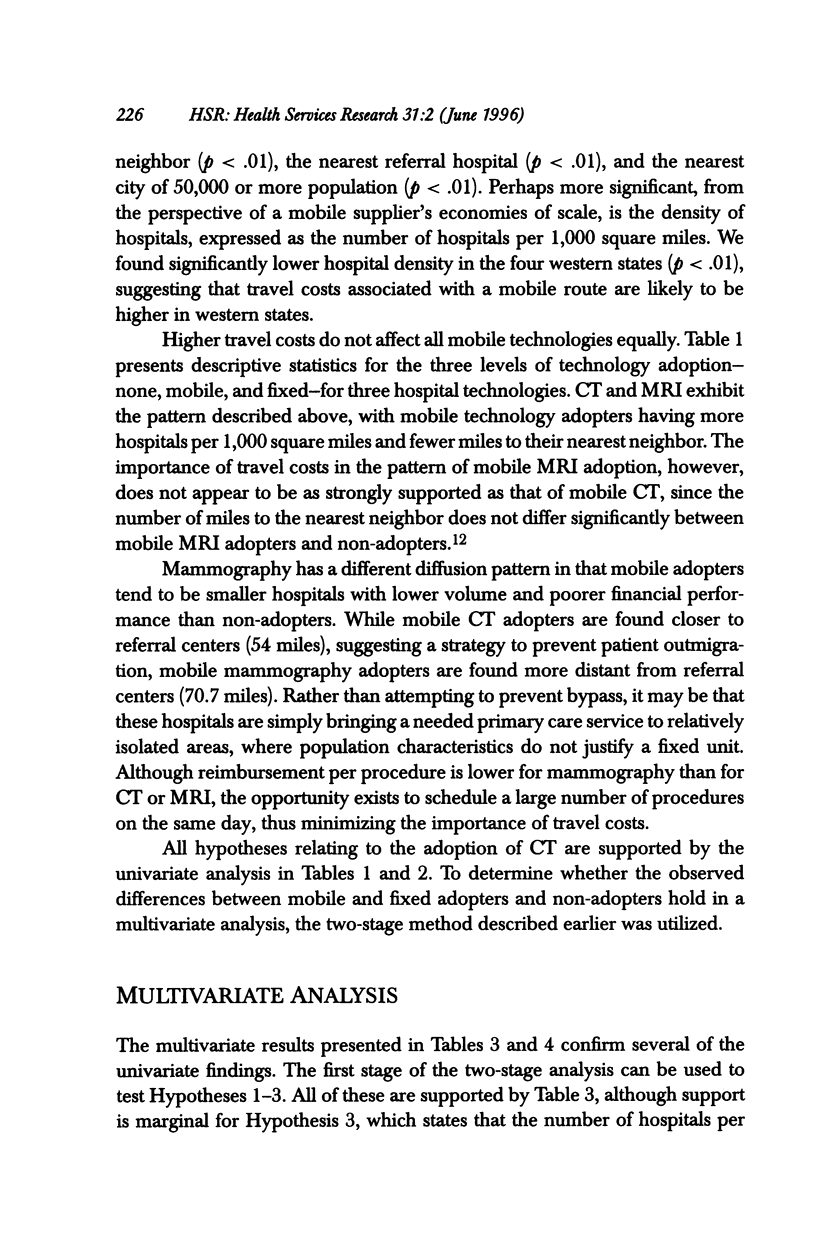
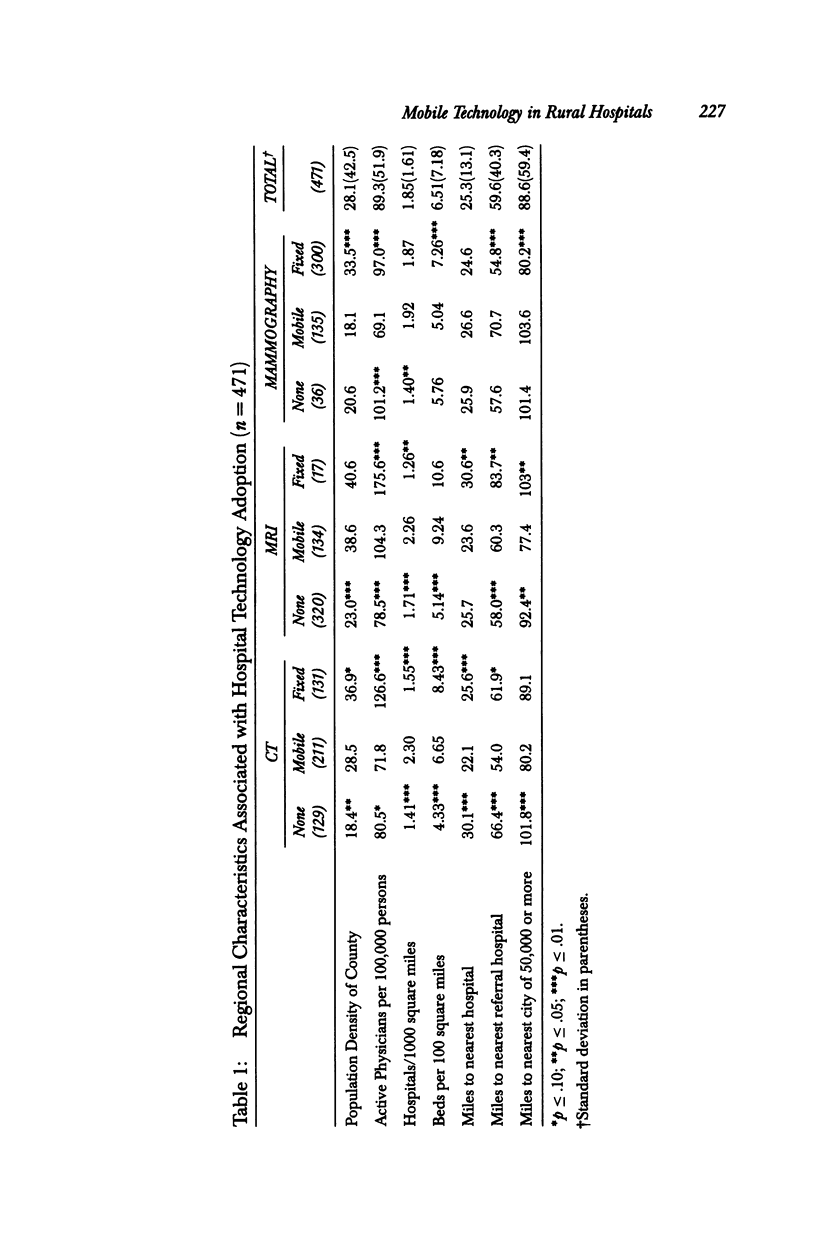
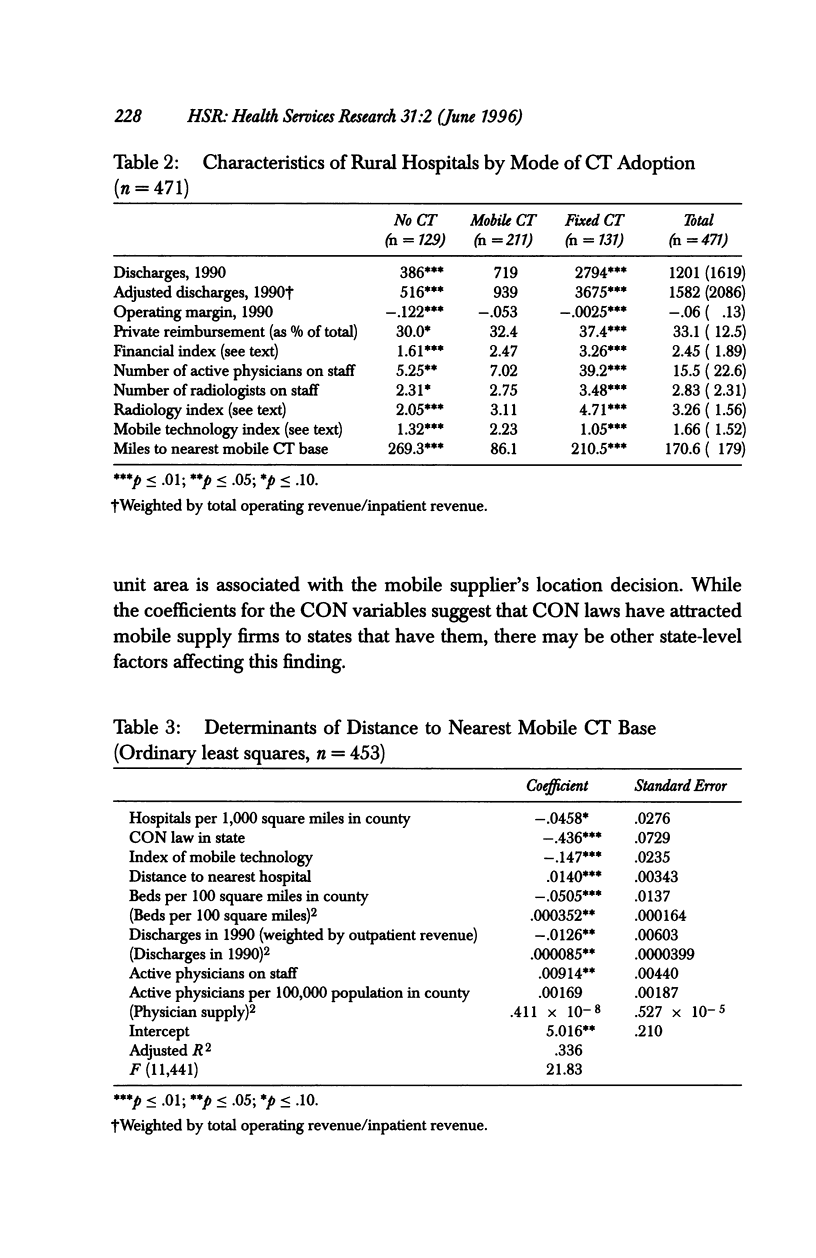
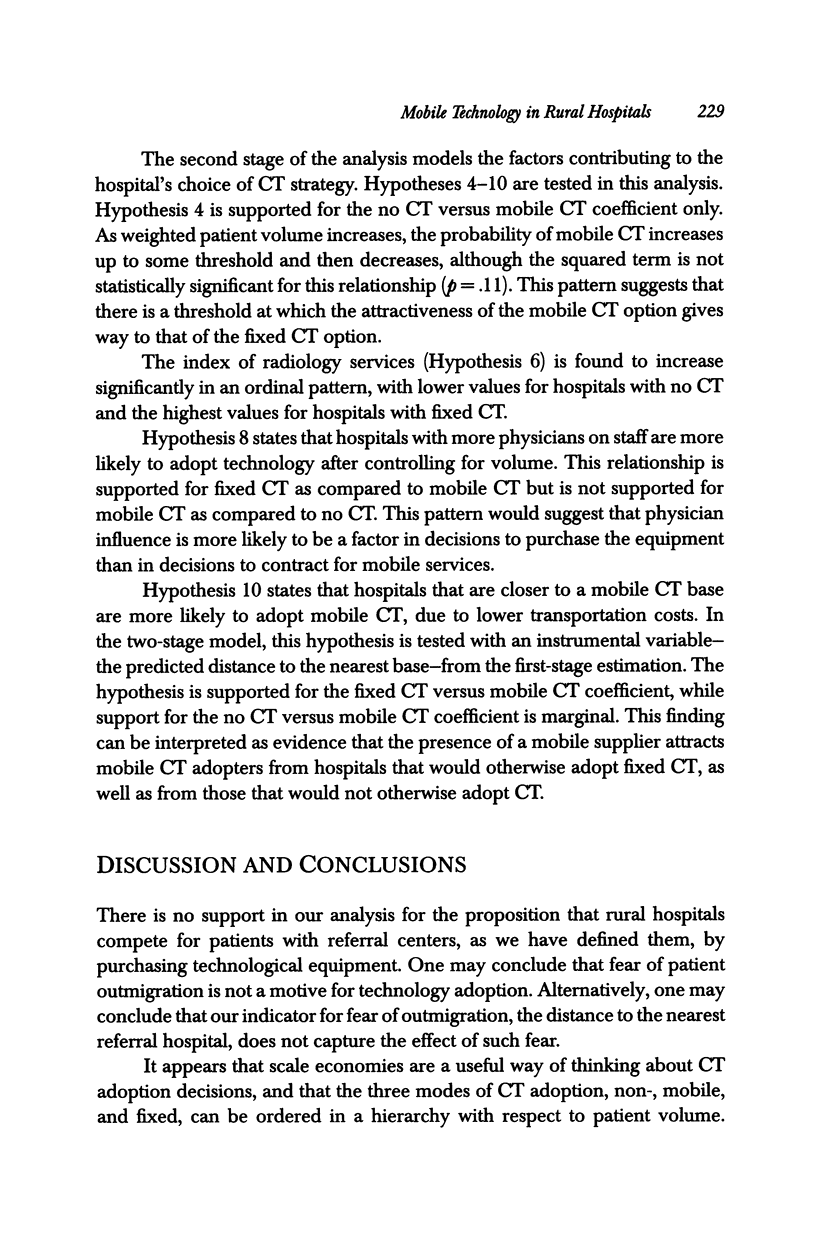
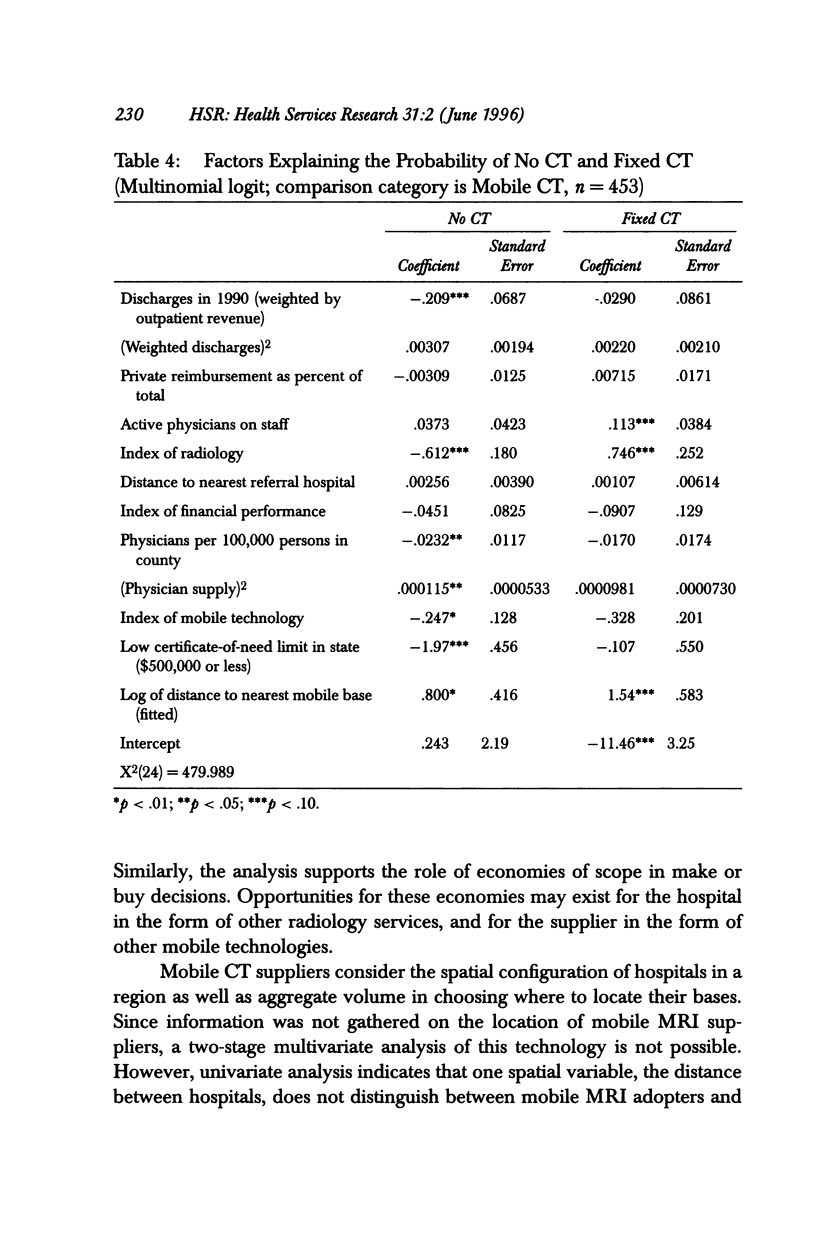
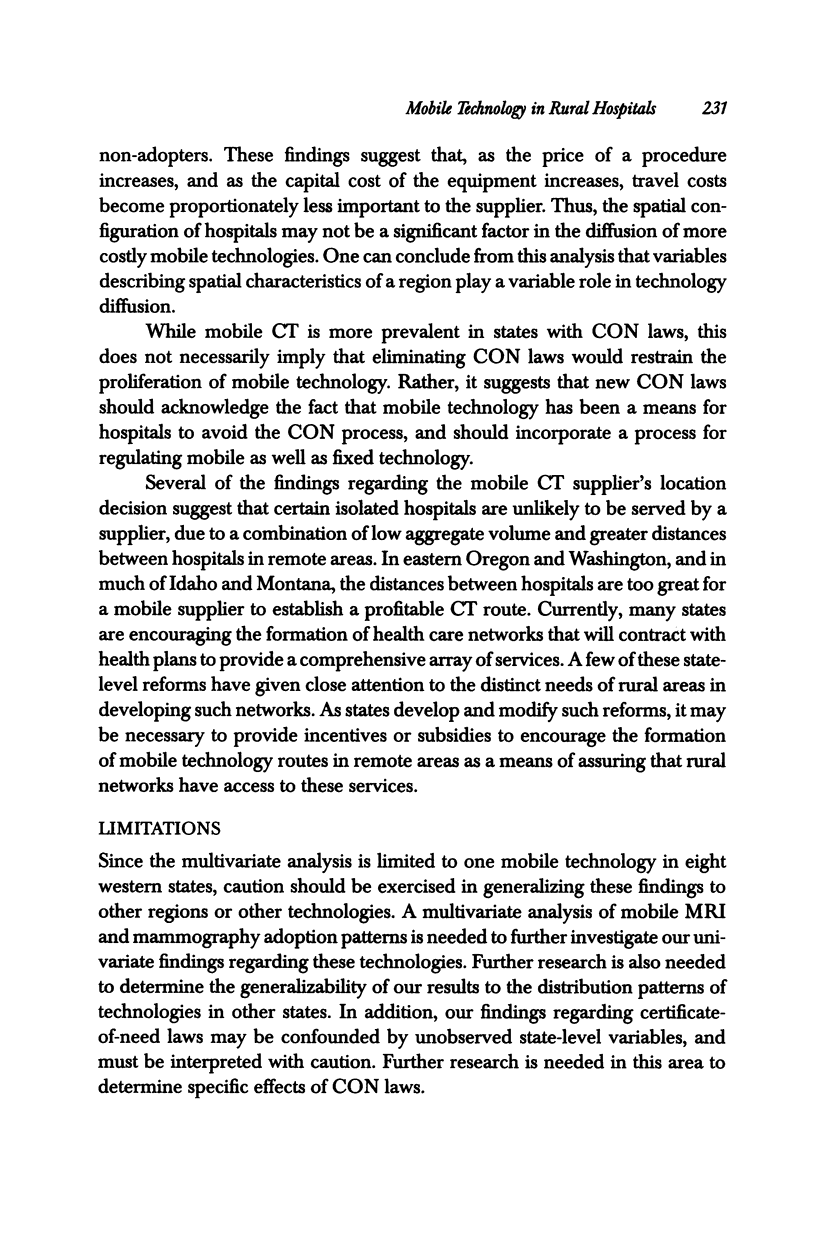
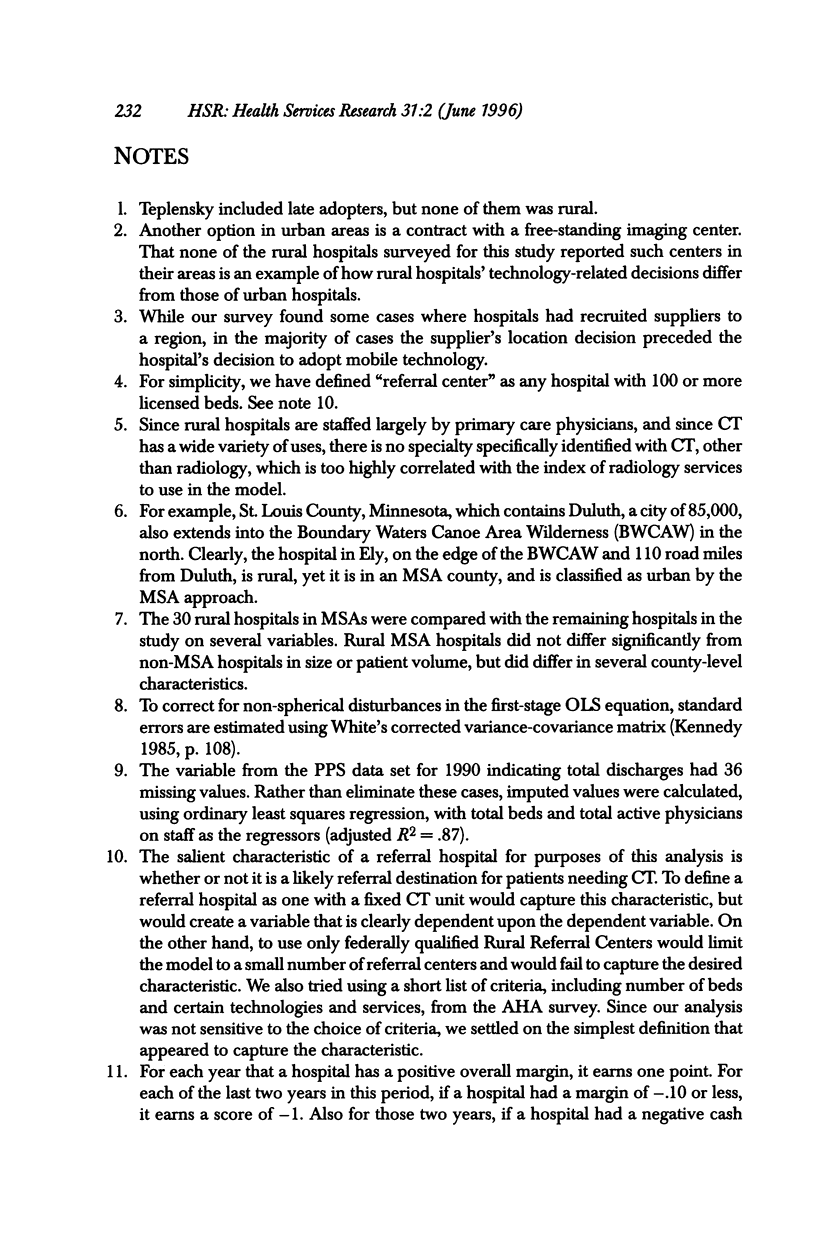
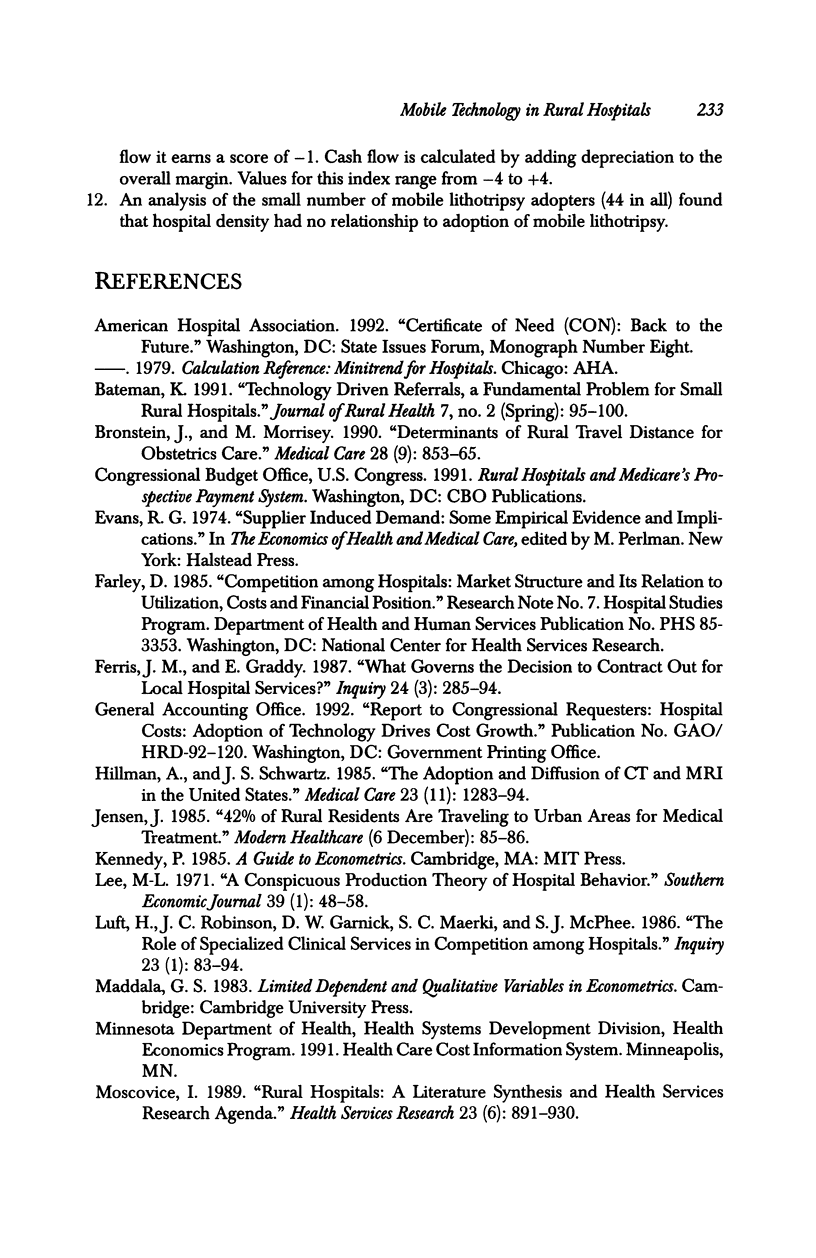
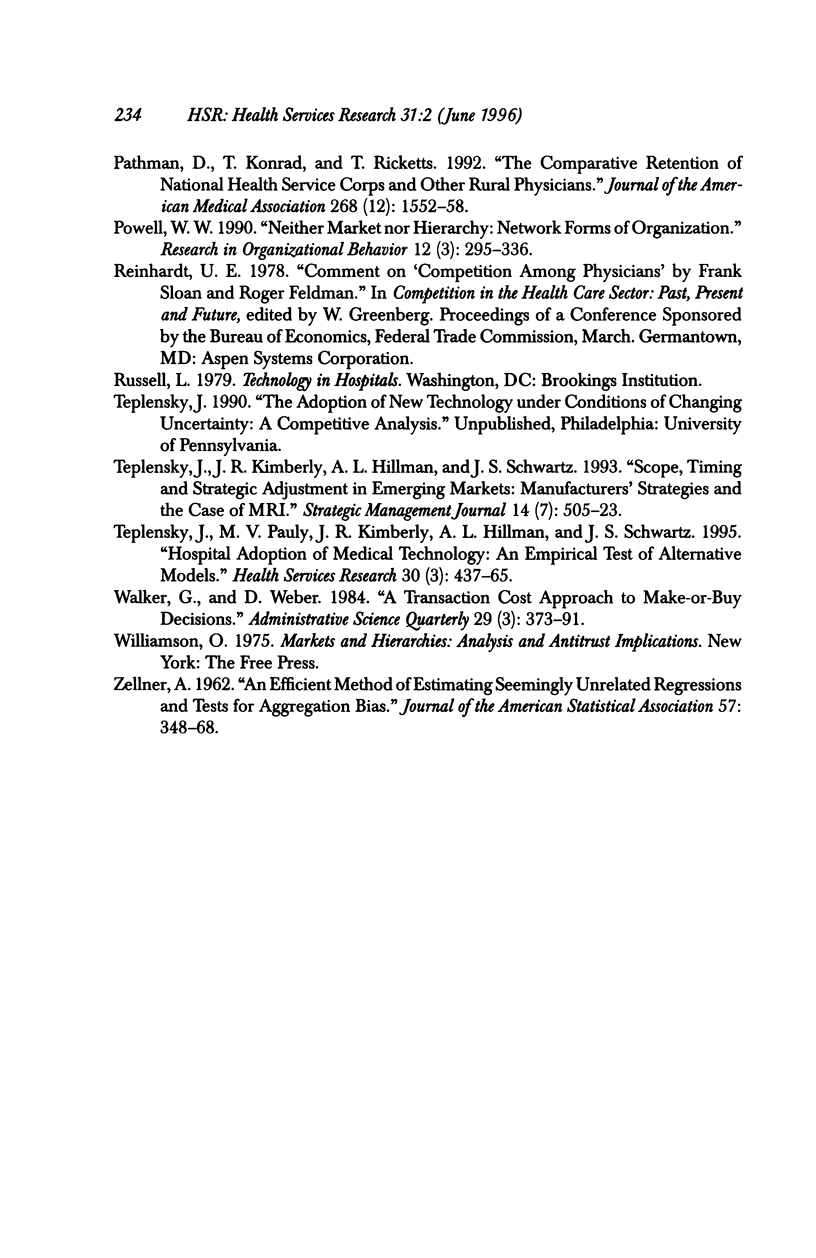
Selected References
These references are in PubMed. This may not be the complete list of references from this article.
- Bateman K. A. Technology-driven referrals, a fundamental problem for small rural hospitals. J Rural Health. 1991 Spring;7(2):95–100. doi: 10.1111/j.1748-0361.1991.tb00711.x. [DOI] [PubMed] [Google Scholar]
- Bronstein J. M., Morrisey M. A. Determinants of rural travel distance for obstetrics care. Med Care. 1990 Sep;28(9):853–865. doi: 10.1097/00005650-199009000-00013. [DOI] [PubMed] [Google Scholar]
- Ferris J. M., Graddy E. What governs the decision to contract out for local hospital services? Inquiry. 1987 Fall;24(3):285–294. [PubMed] [Google Scholar]
- Hillman A. L., Schwartz J. S. The adoption and diffusion of CT and MRI in the United States. A comparative analysis. Med Care. 1985 Nov;23(11):1283–1294. doi: 10.1097/00005650-198511000-00007. [DOI] [PubMed] [Google Scholar]
- Luft H. S., Robinson J. C., Garnick D. W., Maerki S. C., McPhee S. J. The role of specialized clinical services in competition among hospitals. Inquiry. 1986 Spring;23(1):83–94. [PubMed] [Google Scholar]
- Moscovice I. S. Rural hospitals: a literature synthesis and health services research agenda. Health Serv Res. 1989 Feb;23(6):891–930. [PMC free article] [PubMed] [Google Scholar]
- Pathman D. E., Konrad T. R., Ricketts T. C., 3rd The comparative retention of National Health Service Corps and other rural physicians. Results of a 9-year follow-up study. JAMA. 1992 Sep 23;268(12):1552–1558. [PubMed] [Google Scholar]
- Teplensky J. D., Pauly M. V., Kimberly J. R., Hillman A. L., Schwartz J. S. Hospital adoption of medical technology: an empirical test of alternative models. Health Serv Res. 1995 Aug;30(3):437–465. [PMC free article] [PubMed] [Google Scholar]


